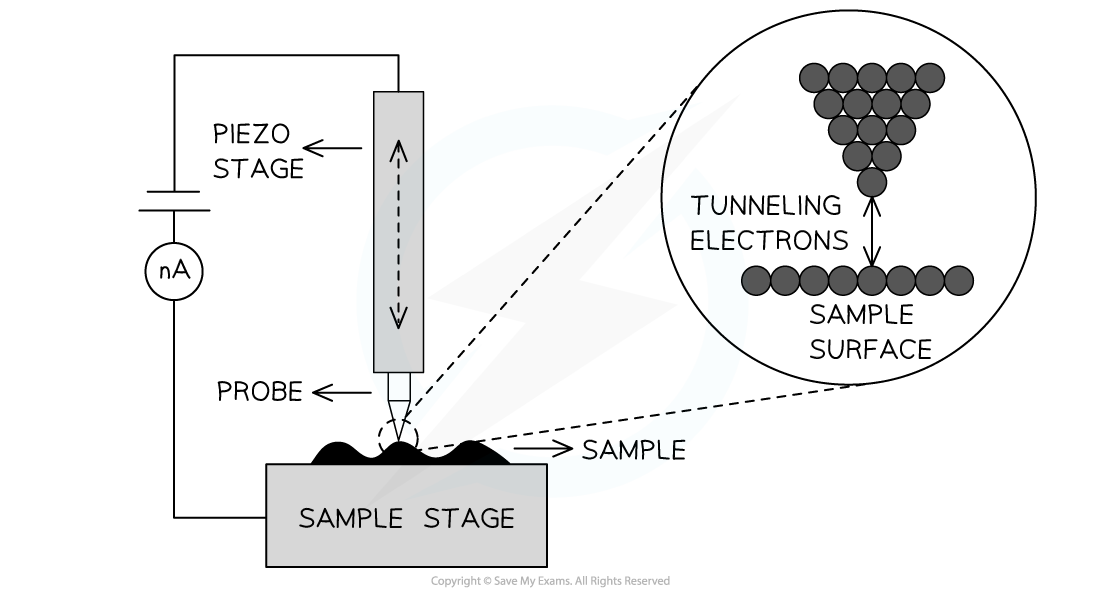Tunnelling
- Single potential wells lead to quantised energy levels and their associated wavefunctions
- The wavefunction extends throughout space
- However, for infinitely deep square wells the wavefunctions are localised within the well region
- The probability of finding the quantum particle at the barrier is zero
- For a finite barrier, the wavefunction can penetrate the barrier
- So, the particle has some probability of being in a “classically forbidden region”
- If there are two well-like regions, the solution of Schrodinger’s equation gives an energy level and wavefunction that extends over the whole region of the potential well
- When the red wave function is squared it gives the probability of finding the particle in a particular region of space
- Since the wave function extends through the barrier this means there is a finite probability of finding the particle in either of the two well regions

A thin barrier or classically forbidden region can result in tunnelling
- Consequently, if a quantum particle were placed in the narrow well on the right, it is possible at some time later to find it in the region on the left
- The particle is said to have tunnelled through the narrow barrier
Tunnelling & Alpha Decay
- The strong nuclear force within the nucleus is represented by the square well
- While the
-dependence of the Coulombic repulsion dominates outside the well
- While the
- Nucleons in the nucleus have quantised energy levels and wave functions
- An alpha particle can gain energy and occupy an excited energy level where the barrier width is smaller
- As a result, the alpha particle can tunnel through the classically forbidden region
- This greatly increases the probability of the alpha particle being emitted

Alpha decay through quantum mechanical tunnelling
Uses of Quantum Tunnelling
- Quantum tunnelling is utilised in several systems, for example in:
- Semiconductor devices
- Fusion reactions in the Sun
- A scanning tunnelling microscope
- In one mode of operation of a scanning tunnelling microscope, a sharp point, one atom thick, is maintained close to a surface
- This is so that a small tunnelling current between the tip and the surface remains constant
- In this case, the gap between the tip and the sample surface acts as the barrier that the electrons must tunnel through
- The tip is moved up and down and across the surface by piezoelectric transducers allowing the sample surface to be mapped out
 Simplified schematic of a scanning tunnelling microscope
Simplified schematic of a scanning tunnelling microscope
